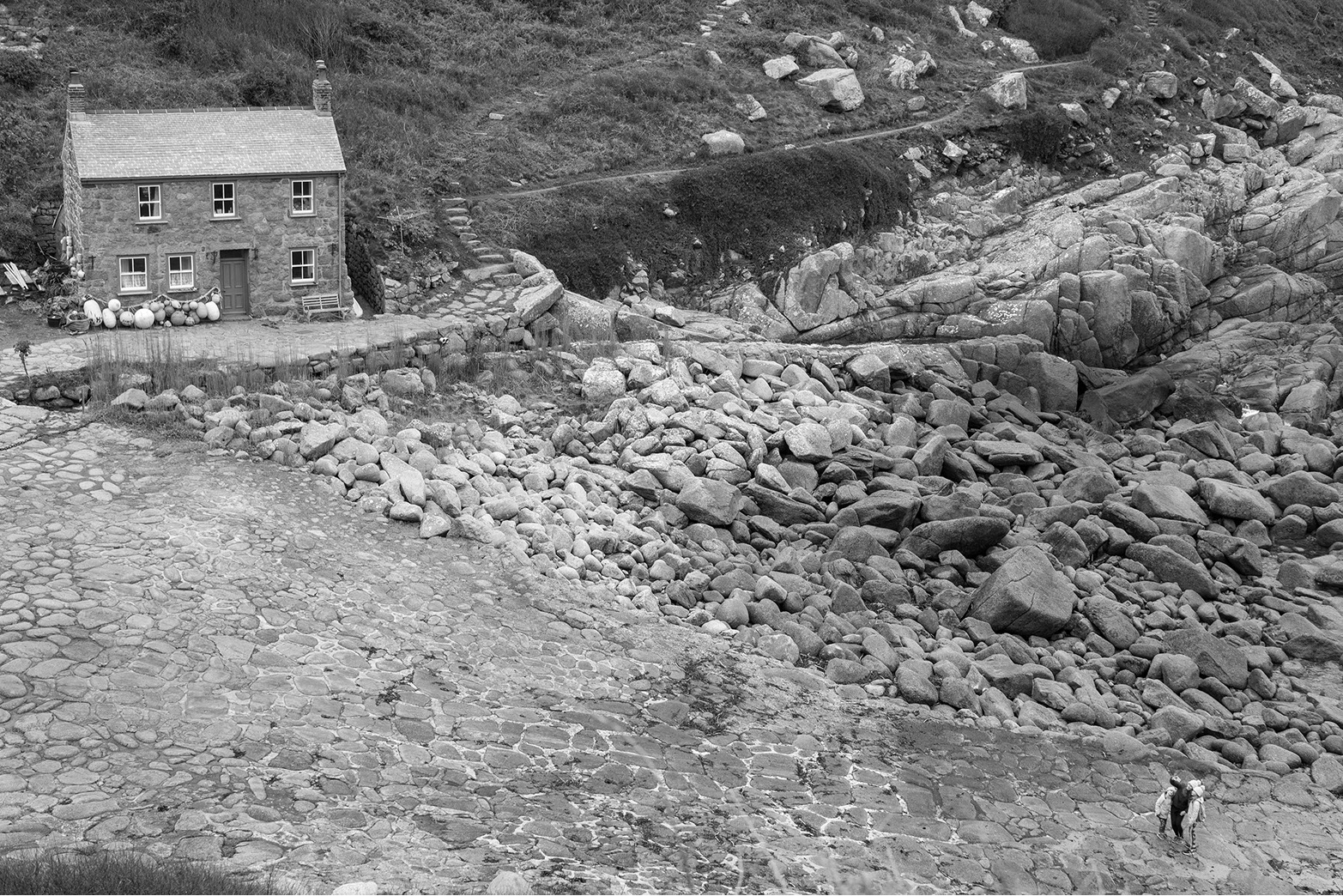
Penberth
Leica M10-Monochrom with
50mm Summilux Asph 1/90th at f2.8 ISO
640
By Jonathan Slack
Introduction
I have been lucky enough
to test all 3 of Leica’s Monochrom cameras. The 18mp M9 Monochrom was launched
in Berlin amongst much excitement in November 2012. The 24mp M246 Monochrom was
announced two and a half years later on April 30th 2015. We have had to wait
nearly 5 years for the latest version: the M10-Monochrom being announced on
January 17th 2020.
I think that for many of
us the M10 was the ultimate digital expression of the Leica Rangefinder camera.
They had managed to reduce its size to that of an M7, to speed it up, quieten
the shutter and streamline the operation. Then came the M10-P with an even
quieter shutter.
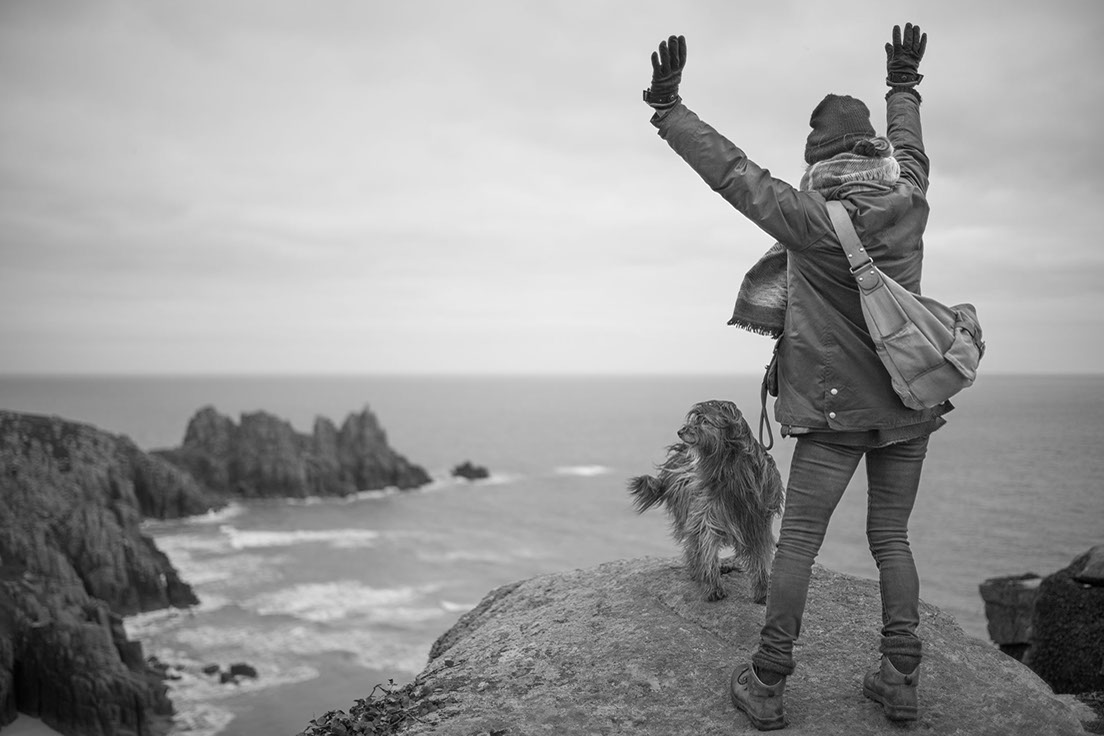
Pednvounder and Logan's
Rock
Leica M10-Monochrom with
35mm Summilux FLE 1/250th at f1.4 ISO 160
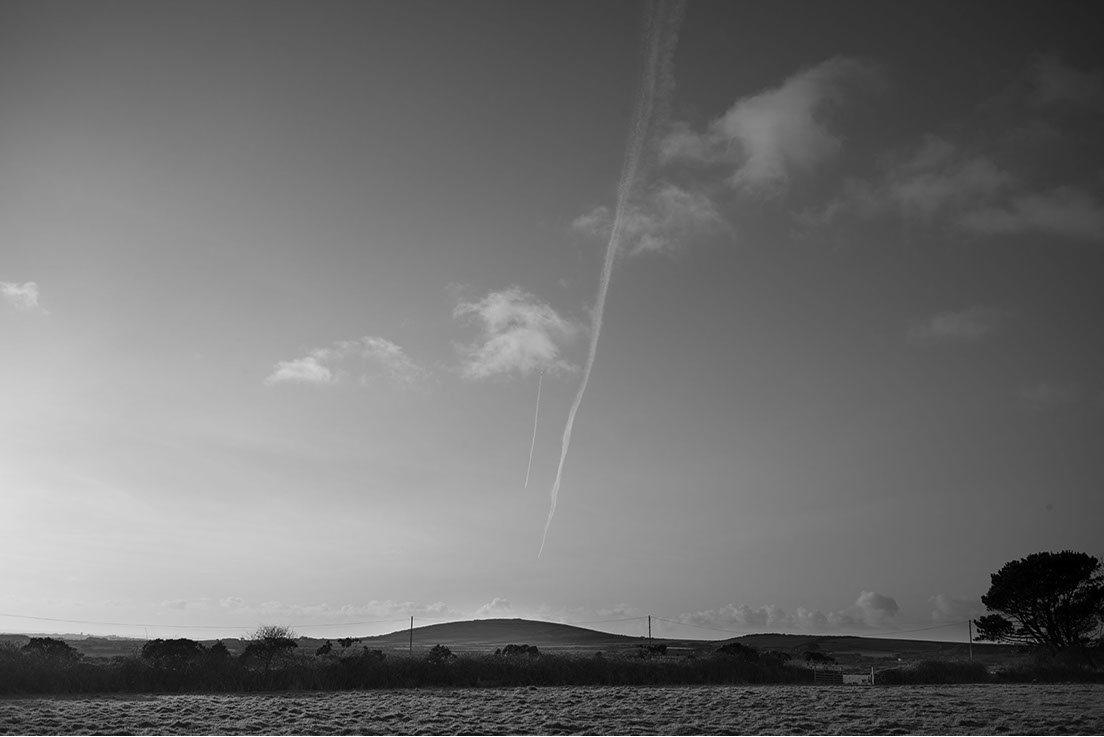
Chapel Carn Brae
Leica M10-Monochrom with
28mm Summaron-M 1/500th at f9.5 ISO 160
The M10-Monochrom retains
the quieter shutter of the M10-P, but adds a completely new 41mp monochrome
sensor (7864 x 5200 pixels). Of course this brings up a number of immediate
questions:
Are the M lenses good
enough to support such resolution?
Does anyone really need
this much black and white resolution?
Is the M10 electronics
sufficient to deal with such big files?
Is it possible to hold the
camera steady enough with no Stabilisation?
Is it possible to focus
accurately enough with the rangefinder
I’ll be looking at these
questions in the course of this article.
As usual I should
emphasise that my job with Leica is as a camera tester, and my job is to report
problems to Leica (which I certainly do!). On the other hand I would never miss
out anything which seemed to me to be critical and I don’t get paid for writing
these articles (either directly or indirectly). I’m not asked what to write,
and although I do show them to Leica first for fact checking that is all that
they do.

Roo and Eros Wang (the
plane)
Leica M10-Monochrom with
50mm Summilux Asph 1/125th at f2 ISO 400
In the past (and always by
chance) it has turned out that testing cameras has coincided with one of our
trips abroad. This time it hasn’t been the case, what’s more I’ve had a pretty
busy time at work, so, apart from a brief working trip to Cornwall (where it
rained every day), the images accompanying this article have mostly been shot
within walking distance of home (or in a local pub!).
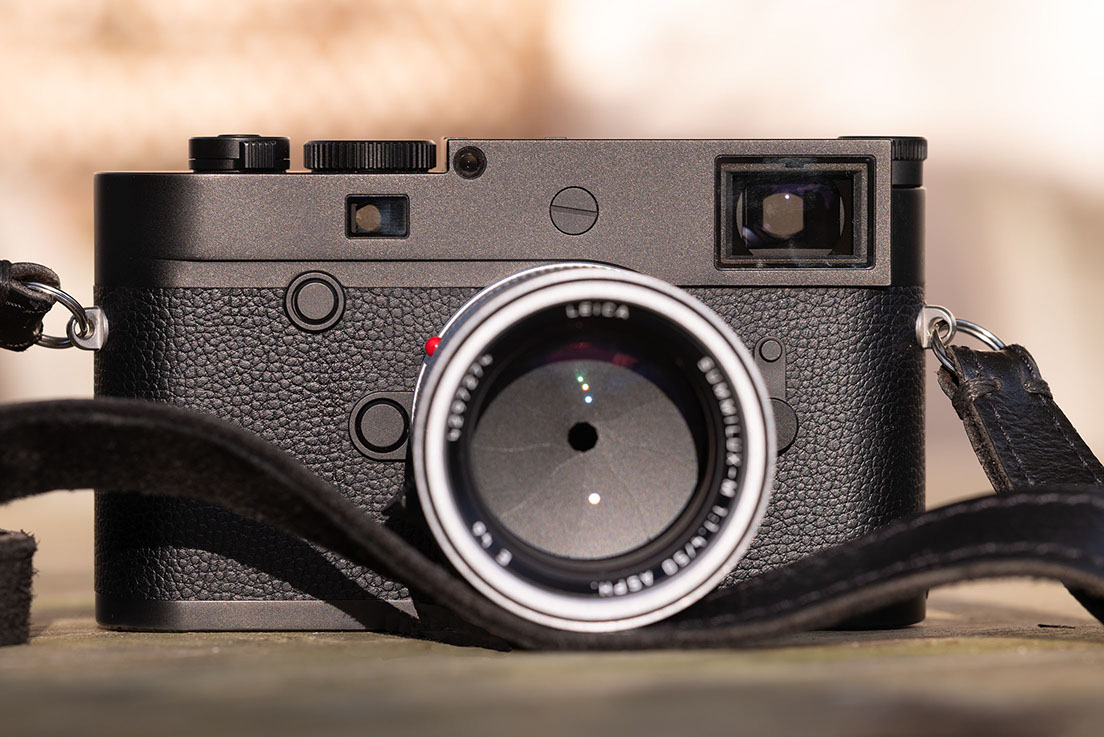
The Handsome M10 Monochrom
Leica SL2 with 75mm APO
Summicron SL f5.6 1/160th ISO100
The Body
The M10-Monochrom body is
a beautiful thing, and I think this might just be the loveliest of all the
variants (perhaps of all the digital M cameras). The body is a stealthy black
chrome, with no red dot (just the big screw of the M10-P). It has no logo on the
top plate, just the word MONOCHROM engraved in small letters at the front (mine
also has P03/15 engraved to indicate it’s prototype status). On the back it
says LEICA CAMERA WETZLAR - MADE IN GERMANY, but like the engraving on the top
plate this is not picked out In colour.
The shutter speed dial has
the shutter speeds picked out in white (as usual), but the A setting is grey
rather than red, and this goes for the M setting on the ISO dial and the red
dot on the on/off. The rear plate is the same as a normal M10, with LV, PLAY
and MENU buttons on the left and a 4 way rocker switch on the right with a
central button. The thumb wheel and it’s bump are also the same as the M10.
The whole effect is very
discreet and really smart.
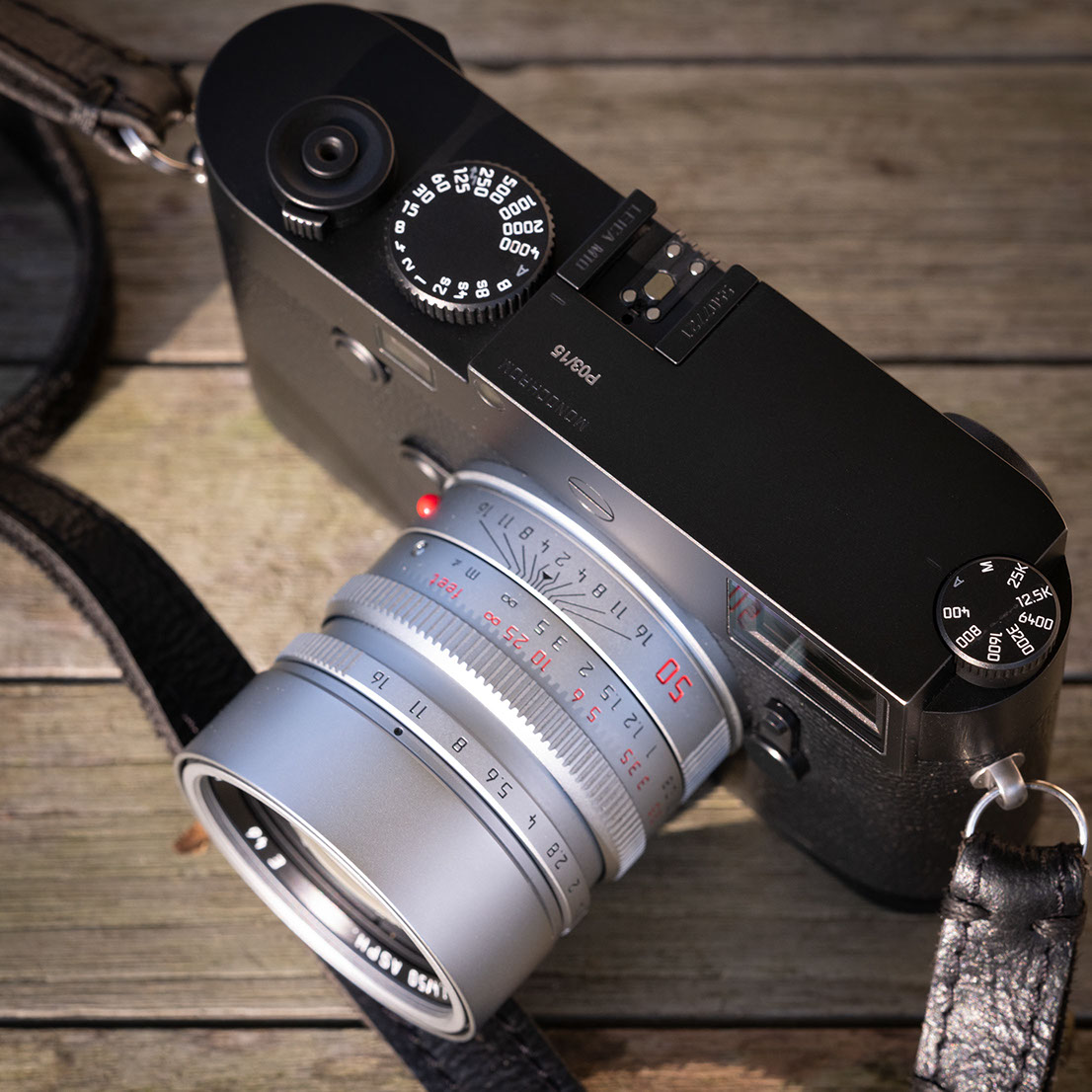
The Handsome M10 Monochrom
Leica SL2 with 75mm APO
Summicron SL f8 1/160th ISO500
Operation, Speed, and
Menus
If you put a much larger
sensor into a camera with the same processor you are inevitably going to have
an impact on the speed of processing, and it’s certainly the case with the
M10-Monochrom. Shot to shot times, writing to disk and review times are all slower.
So perhaps it isn’t the camera for
sport!
On the other hand I mostly
use Sandisk Extreme Pro 64Gb 95ms SD cards, and with the camera on
continuous-fast it takes 10 DNG files at high speed before pausing, and another
10 before really slowing down. I can’t imagine anyone using continuous on a
camera like this, but it does show that for measured shooting the slightly
slower processing times are unlikely ever to cause an issue. Certainly I’ve
never been inconvenienced by it.
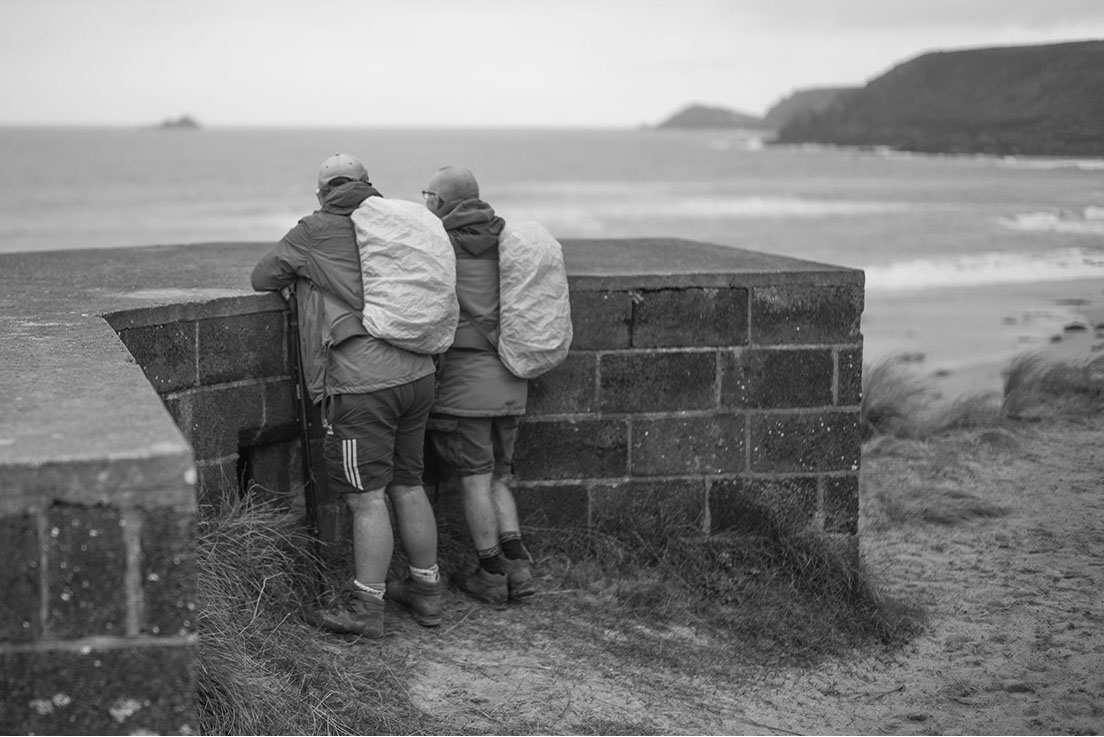
Contemplating the Brisons
Leica M10-Monochrom with
50mm Summilux Asph 1/2000th at f1.4 ISO
160
On the rare occasion the
camera is behind itself reading or rendering a file it shows the file number
(rather than a question mark or error).
If you’re a fast shooter,
then you should be aware of the issue, but for most normal photographers it
won’t ever be relevant. The important point is that as far as I’m aware there
is no shutter lag involved, whether you use the EVF or not.
I’m not going into the
menu system in any detail. As expected, it is pretty much identical with the
M10, but with colour and white balance options removed.
Having spent much of the
last year using Panasonic and Fujifilm cameras it’s a real joy getting back to
Leica’s simple but functional menu system. I think it’s sometimes overlooked
how much purpose and determination Leica put into keeping it like this.
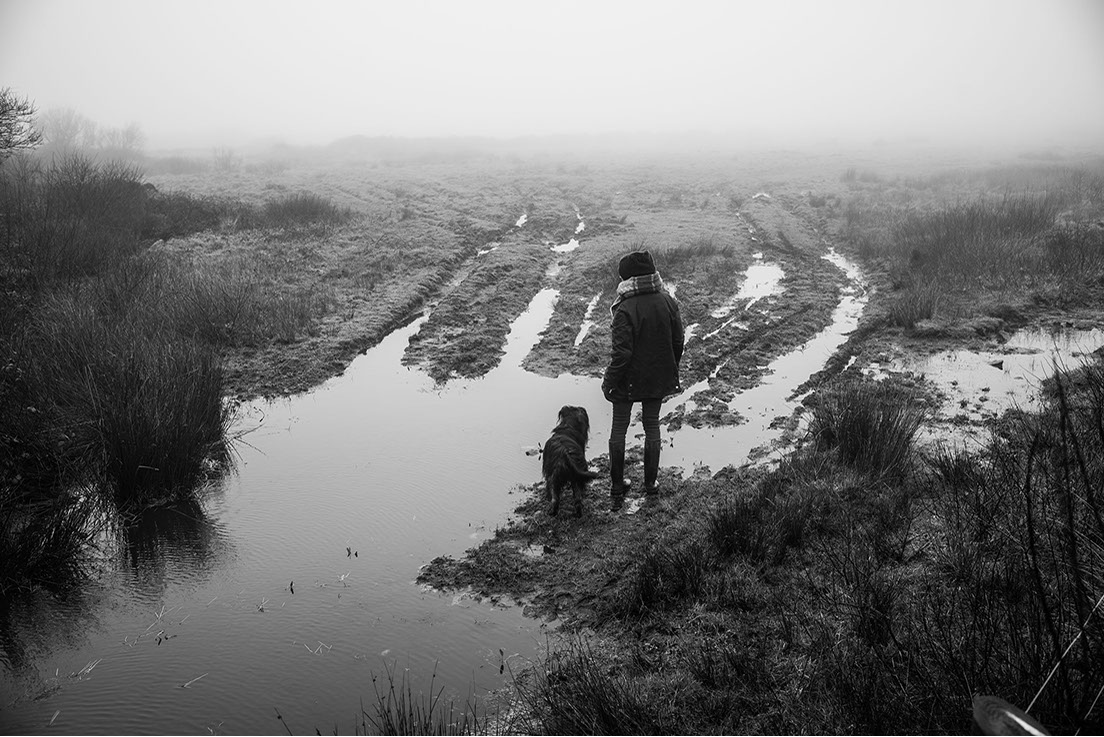
Bartinney Bog
Leica M10-Monochrom with
35mm Summilux FLE 1/90th at f2.8 ISO 320
Focusing and Image
Stabilisation (or not)
The Leica M Rangefinder
(or, in German, Messsucher, hence the “M”)
was first released in 1953, and it wouldn’t be unreasonable to wonder
whether it is still fit for purpose for a 41mp sensor 67 years later in 2020.
I’m not fortunate enough
to own a 50 or 75 Noctilux, but I’ve found rangefinder focusing with my 50
Summilux Asph and 75 APO Summicron to be easy and reliable, even wide open (I
mostly shoot wide open). I have a practice game I play, which involves focusing
with the rangefinder, and then checking whether it’s correct in the EVF, it
always reassures me what a wonderful tool a rangefinder still is.
Which brings me back to
the EVF. I know there have been a lot of complaints that it’s rather old
school, and I long since stopped using it with the M10 (I’m pretty good at
focusing with a rangefinder, and I like to see around the subject).
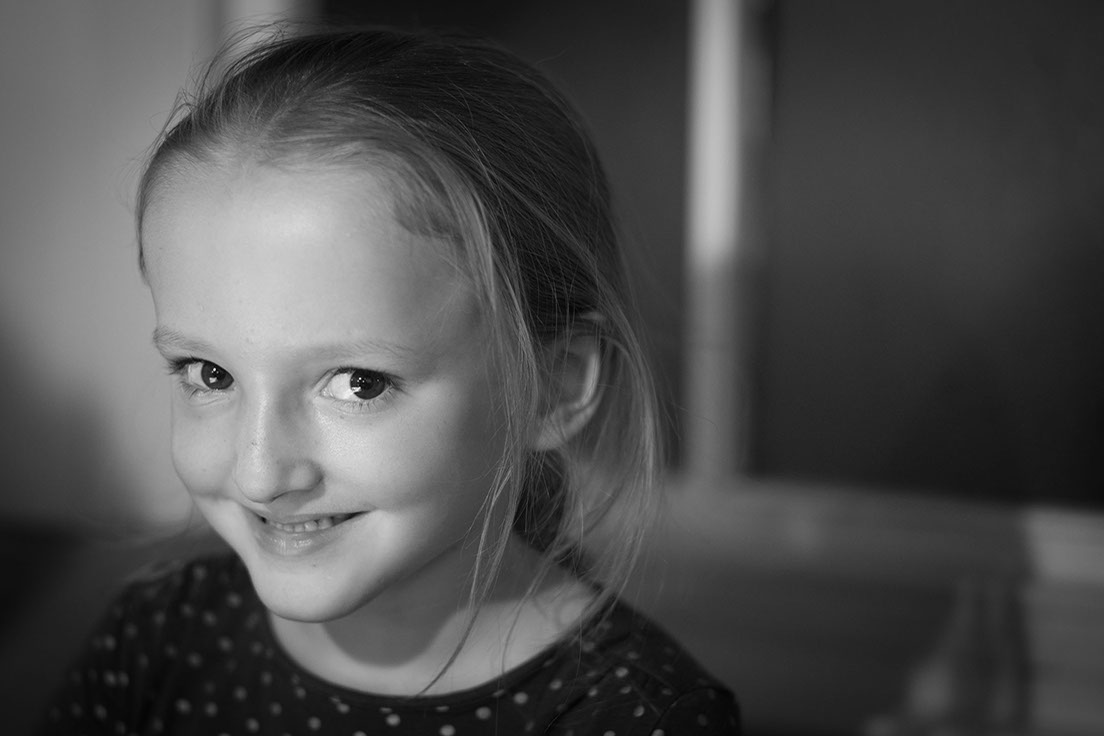
Sparkling Scarlett
Leica M10-Monochrom with
75 mm APO Summicron Asph 1/90th at f2
ISO 2500
I found that I liked using
the EVF with the M10-Monochrom; partly because it was nice to see the image in
black and white, but also for focusing: I think it works best with focus
peaking turned off, and with auto zoom turned off (with zooming on the front button).
For most images I found there was a shimmer of excitement over the area in
focus, with no need to zoom in for critical focus. I particularly enjoyed using
it with the 60mm Macro Elmarit R.
I imagine that for those
lucky enough to have a Noctilux or the 90 Summilux the EVF will be a real
benefit, but I’ll only use it when I want to see the end result before I take
the picture. Surely the point of a Leica M camera is the rangefinder (at least
that’s how I see it).
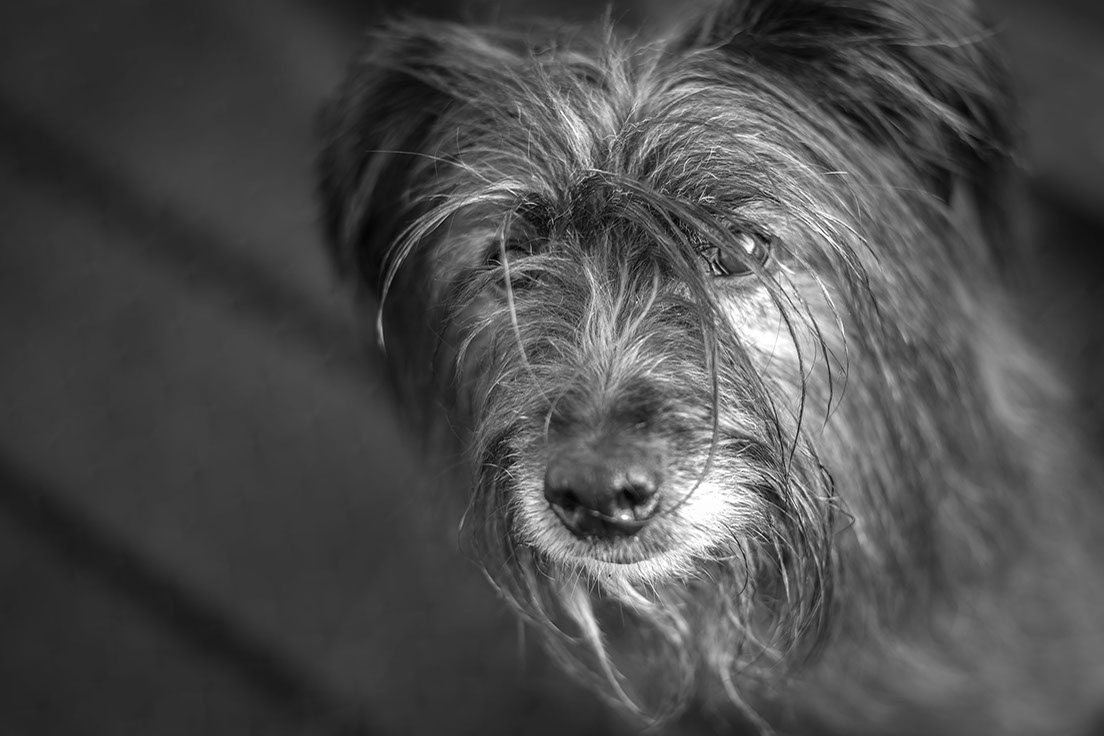
Just learn to talk
couldn't you?
Leica M10-Monochrom with
75 mm APO Summicron Asph 1/250th at f2.4
ISO 160
With respect to image
stabilisation, of course, it would be nice to have it, but the very quiet
shutter and the solid body seems to have made camera shake a relatively minor
problem, and the fantastic high ISO together with the extra stop you get
without the colour filter array means that you can use the ISO settings to
preserve a high enough shutter speed.
In this context I found
the 1/f 1/(2f) and 1/(4f) minimum shutter speed in the Auto ISO settings
particularly useful.
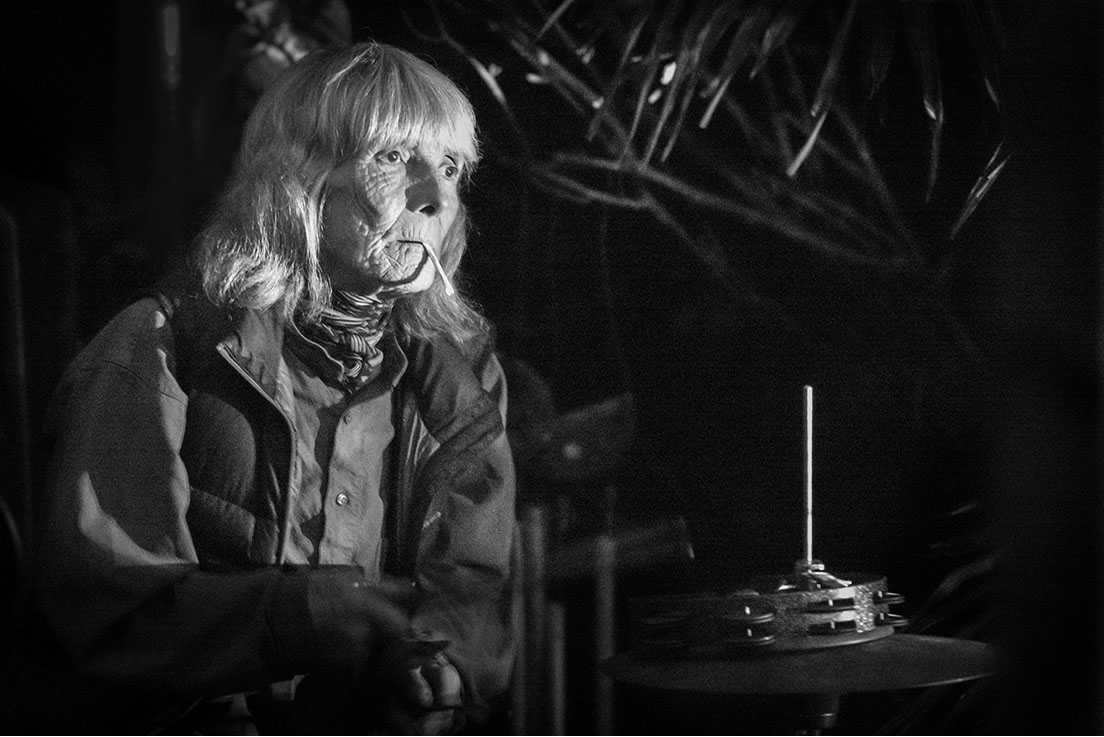
The Drummer and the joint
Leica M10-Monochrom with
75 mm APO Summicron Asph 1/90th at f4
ISO 64.000
Image Quality, Resolution
and ISO
I’m afraid that I was dead
set against Leica increasing the resolution from 24mp which seemed to me to be
the perfect compromise between quality and convenience, resolution and file
size, perfectly capable of a good sized print and fast processing.
But I’ve changed my mind;
the extra price to pay in terms of processing power and storage space is really
small in the face of the extra advantages in terms of image quality and
crop-ability.
With the SL2 and now the
M10M I’ve found myself shooting just with a 50 or a 35, when previously I would
have used a zoom, or a 35 and a 75 (and the lens changes that implies).
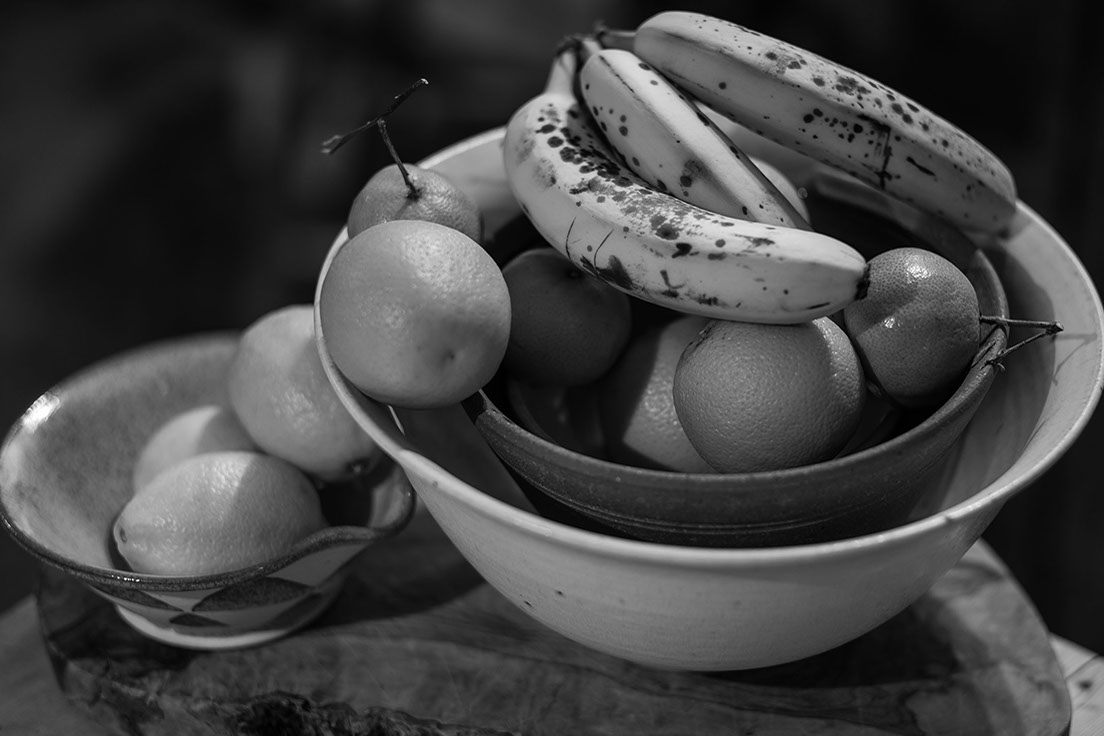
The Fruit Bowl
Leica M10-Monochrom with
75 mm APO Summicron Asph 1/60th at f4
ISO 500
The Monochrome sensor in
the M10-Monochrom foregoes the Bayer filter required in colour cameras. With a
Bayer filter groups of 4 pixels (with Red, Green, Green, Blue filters) are
processed in a batch and then separated into 4 pixels in the demosaicing
process. This means that theoretically the Monochrom has 4 times the absolute
resolution of a colour sensor.
In actual fact the modern
demosaicing routines are very good, and so the resolution bonus with a
Monochrome sensor is perhaps more like 2 times. But that still left me
wondering whether M lenses are up to a comparative resolution of 80mp.
I thought I’d test this
with my idea of the Leica M Triumvirate:
Leica 28mm Summilux Asph
Leica 35mm Summilux Asph
Leica 50mm Summilux Asph
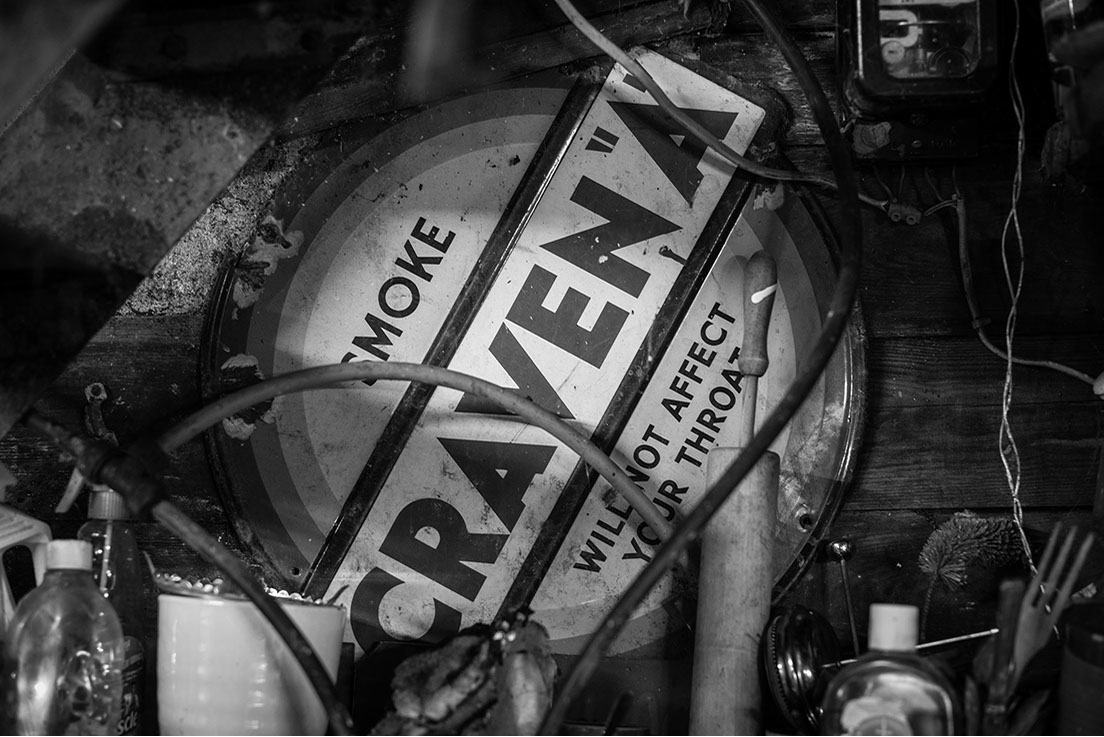
Craven "A" will
not affect your throat
Leica M10-Monochrom with
75 mm APO Summicron Asph 1/60th at f2
ISO 2500
I shot my tame copper
beech hedge at a nasty 10 metres at f1.4, f2, f4, f5.6 and f8 with each lens.
Each of them lost a little at f1.4 and f2 in the very extreme corners (the 35
FLE was probably the best). Stop down a little and the corners are perfect, but
even wide open all but the very corner of the frame is beautifully sharp.
Unfortunately I don’t own
a Leica M246 Monochrom, but I do have my M9 Monochrom with the CCD sensor, and
I thought it might be interesting to do some comparisons between the original
Monochrom (from 2012) and this new version.
I took pictures of our
kitchen dresser in low artificial light with each camera on a tripod with ISO
between 160 and 10,000 (for the M9M) and up to 100,000 (the maximum ISO on the
M10M) I did 100 percent comparisons at natural resolution, and with the M10M
scaled down to match the resolution of the M9M. I then made A4 prints at
critical ISO values.
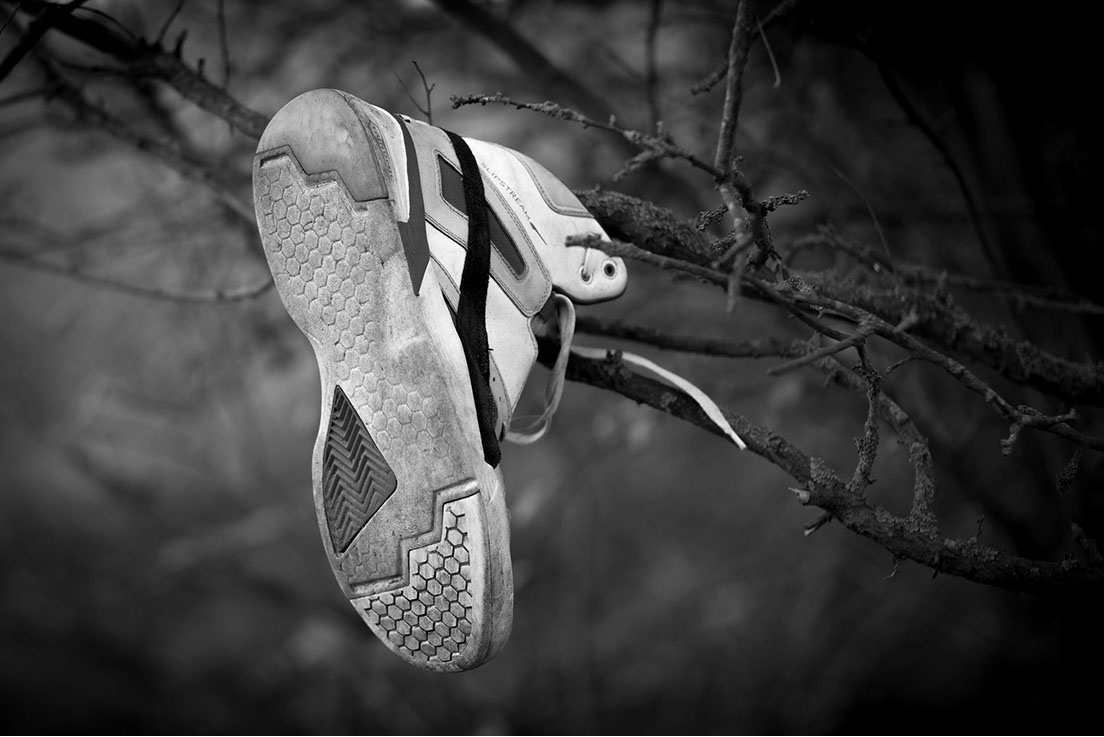
The Lost Boot
Leica M10-Monochrom with
75 mm APO Summicron Asph 1/500th at f2
ISO160
What is immediately clear
is that both cameras are actually quite usable right through the ISO range, but
there has been a huge boost in image quality over the last 8 years, and the
difference between the cameras in terms of noise amounted to about 2 - 3 stops.
So that the M9M at 10,000 ISO was marginally better than the M10M at 100,000
ISO but not as good as the M10M at 64,000 ISO.
Dynamic range is quite a
different thing, you still have to be a little careful not to overexpose the
highlights, but the amount of detail which is hidden away in the shadows in the
new camera is nothing less than breathtaking.

Scepticism
Leica M10-Monochrom with
75 mm APO Summicron Asph 1/125th at f4
ISO12500
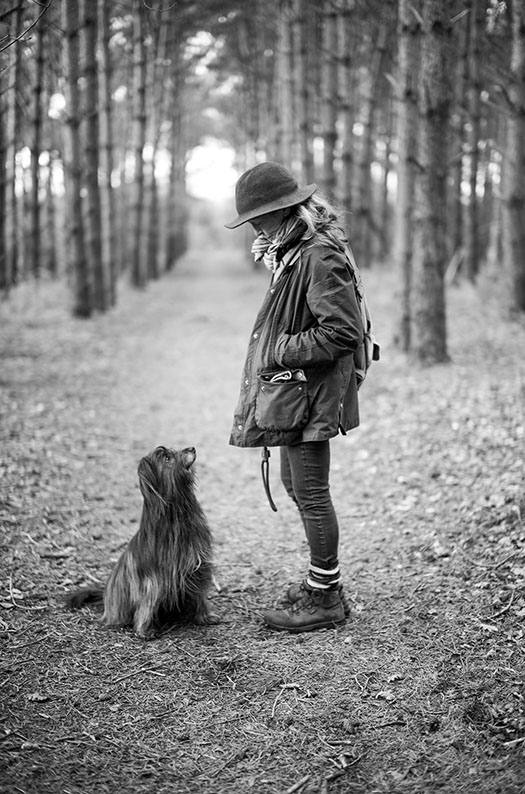
Biscuit?
Leica M10-Monochrom with
50mm Summilux Asph 1/125th at f1.4 ISO
160
Conclusion
The easy part is to say
that this camera is a joy to shoot with, a joy to handle, and produces
wonderful images quite suitable to make very very big prints. The only possible
functional criticism which I can find is that it’s a little slow processing images
and writing them to disk (SD Card).
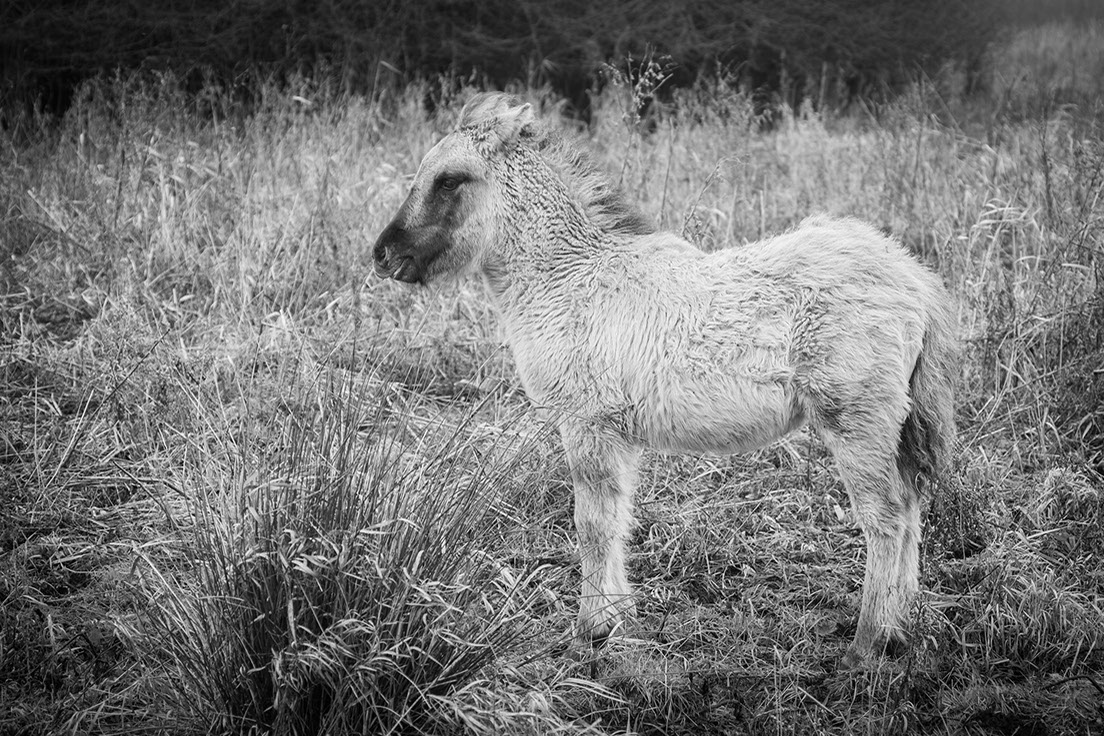
Konkik Pony foal on
Redgrave and Lopham Fen
Leica M10-Monochrom with
60mm Macro Elmarit R 1/250th f8 ISO 160
But why a monochrome
camera? Sure, it was exciting and interesting in 2012 when Leica brought out the
first Monochrom, and arguably the resolution benefits were bigger then, when
the M9 sensor was just 18Mp.
These days converting from
colour to black and white in post processing is much easier, it allows you to
change the conversion on different colour channels and the higher resolution of modern sensors
surely makes the increase of resolution of the monochrome sensor largely
academic.
But shooting with a black
and white camera imposes a discipline on the photographer which can be really
valuable: It really makes you think about the structure of the image and the
composition whereas colour encourages a ‘think about it later’ ethos.
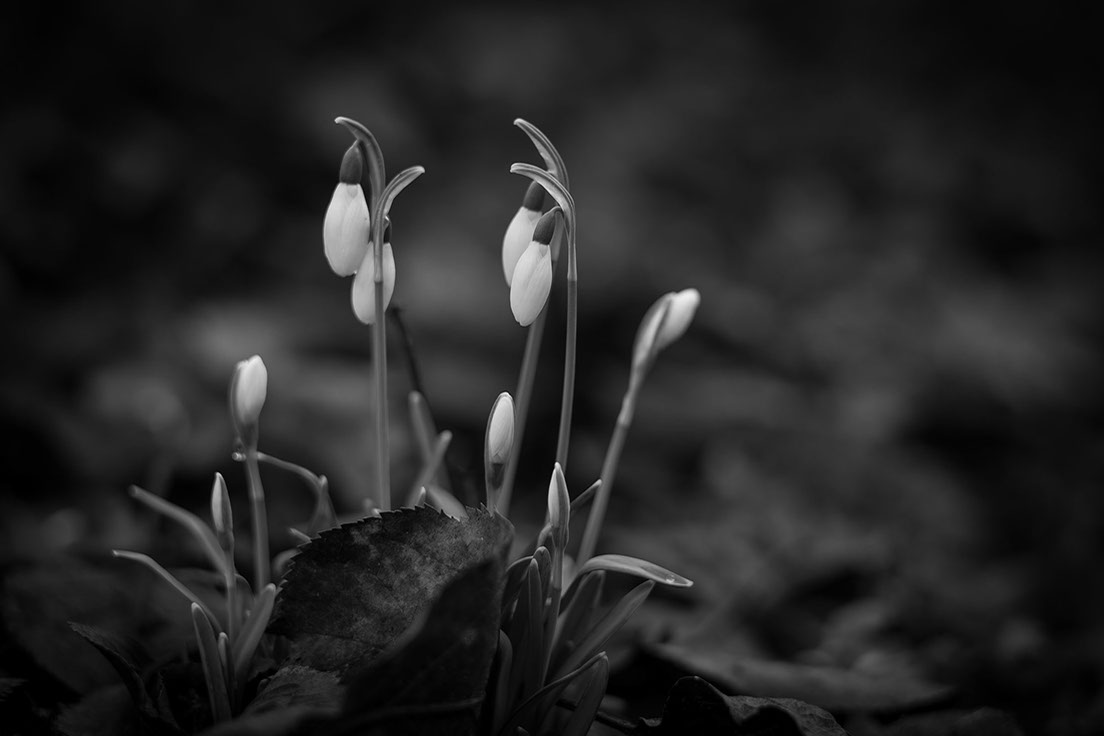
The First Snowdrop
Leica M10-Monochrom with
75 mm APO Summicron Asph 1/500th at f2
ISO160
And then there is Leica.
Whilst other manufacturer’s chase each others technological tails and moan
about falling camera sales, Leica have the courage to produce excitingly
different cameras, free of the function fetish of their competitors and still
brave enough to produce something which really is exciting. I’m absolutely convinced by this camera and
it’s been a real pleasure to have it and shoot with it for the last 4 months.
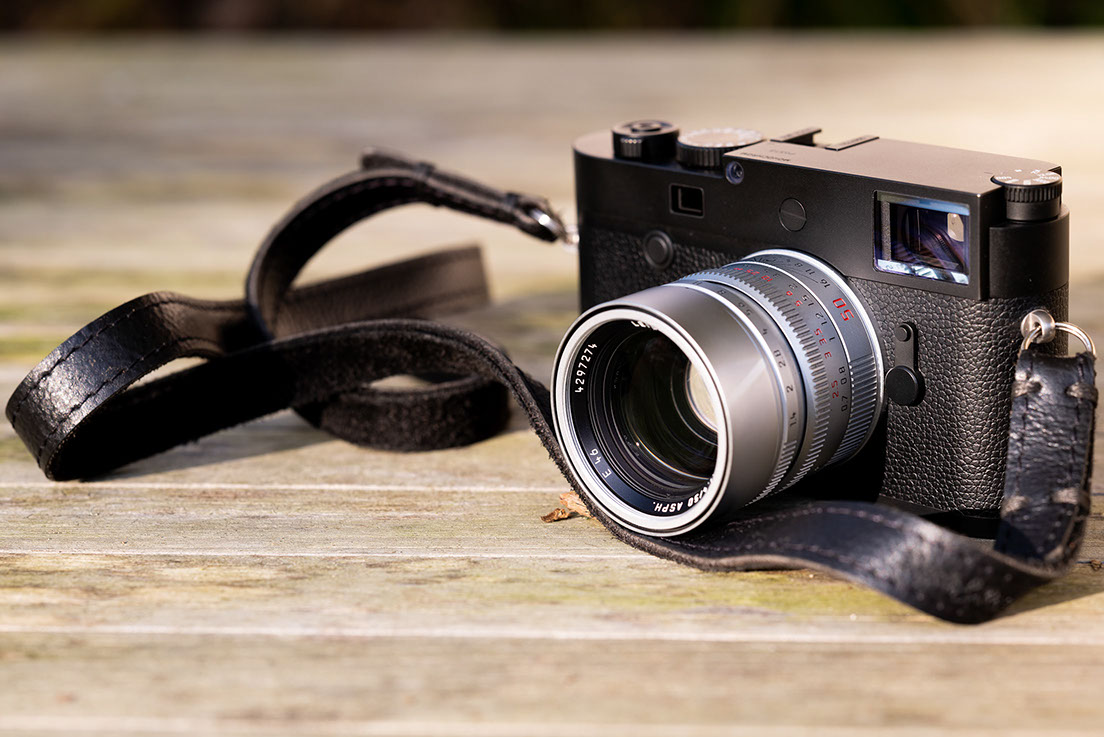
The Handsome M10 Monochrom
Leica SL2 with 75mm APO
Summicron SL f5.6 1/160th ISO200
Acknowledgements and Links
Thank you to Jesko von
Oeynhausen for being helpful and communicative about the camera.
Thanks also to Mike Evans
at Macfilos for suggestions and being such a great guy.
Thank you to Silas Slack
for reading the article and making valuable contributions, and to Adam Jennison
and Saul Slack for looking at the pictures and making sensible suggestions.
Thank you also to Sean
Reid at reidreviews.com for an interesting dialog and for finding the bug with
25,000 and 32,000 ISO (If you bought one of the first cameras you should
install the firmware update!).
Sean is publishing several
articles about the M10 Monochrom: a Field review Of M10M and full side by side
studio comparison tests of MM (Typ 246) and M10M covering the full ISO range
for each. Together with Vignetting
comparisons tests of both cameras with four rangefinder lenses.
grEGORy Simpson at
Ultrasomething.com has published a great review of the M10M with lots of
excellent urban photographs. Thanks also to egor for correcting my memory!
Very Special thanks as
always to my wonderful Emma for putting up with so much whilst I take the pictures
and write these articles.
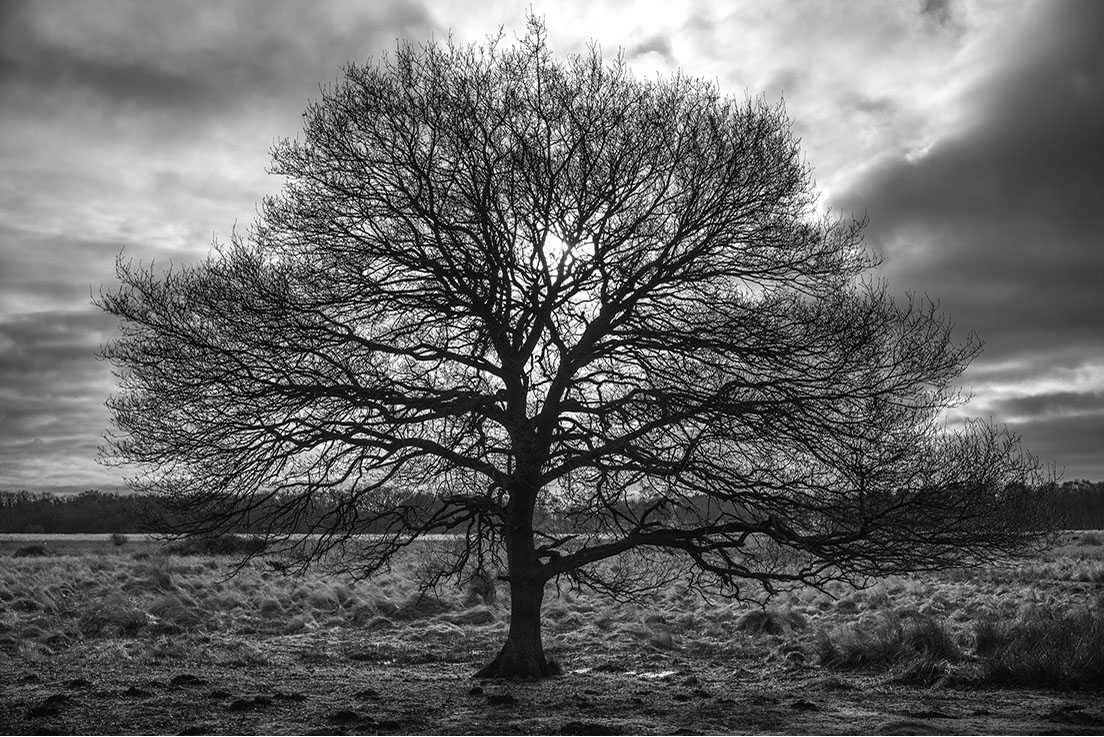
The Lone Tree
Leica M10-Monochrom with 7
35mm Summilux FLE f4 1/4000th ISO160

Dirty Nails
Leica M10-Monochrom with
50mm Summilux Asph 1/90h at f1.4 ISO 320
For other articles on this blog please click on Blog Archive in the column to the right
To comment or to read comments please scroll past the ads below.
All ads present items of interest to Leica owners.
_______________________________________________________________________
For other articles on this blog please click on Blog Archive in the column to the right
To comment or to read comments please scroll past the ads below.
All ads present items of interest to Leica owners.
_______________________________________________________________________

Buy vintage Leica cameras from
America's premier Leica specialist

Buy vintage Leica cameras from
America's premier Leica specialist
Click on image to enlarge
Order: info@gmpphoto.com
Please make payment via PayPal to GMP Photography
Click on image to enlarge
Order: info@gmpphoto.com
Click on image to enlarge
Order: info@gmpphoto.com
Click on image to enlarge
Order: info@gmpphoto.com
Please make payment via PayPal to GMP Photography
Click on image to enlarge
Order: info@gmpphoto.com
Please make payment via PayPal to GMP Photography
Click on image to enlarge
Order: info@gmpphoto.com
Please make payment via PayPal to GMP Photography













No comments:
Post a Comment